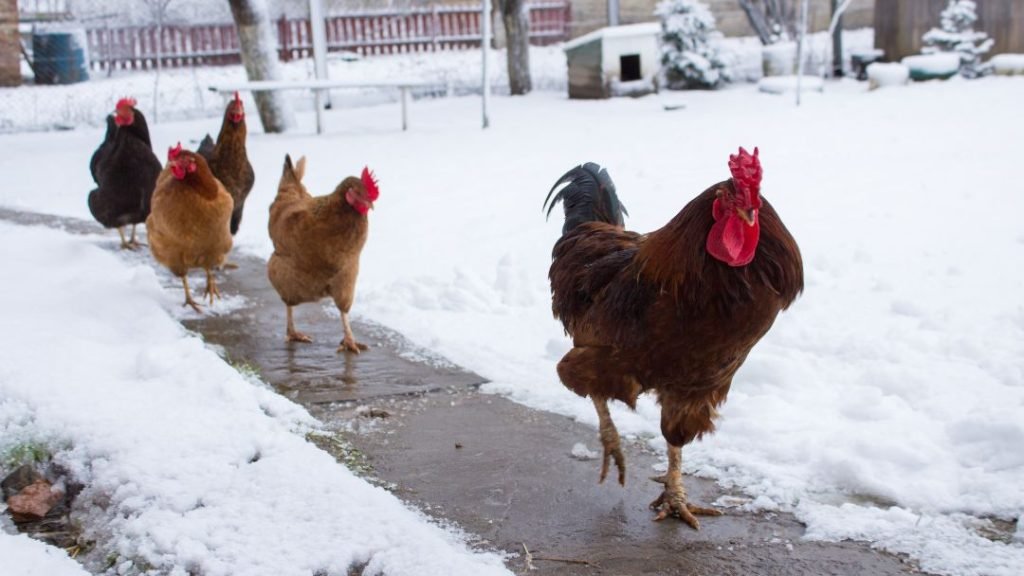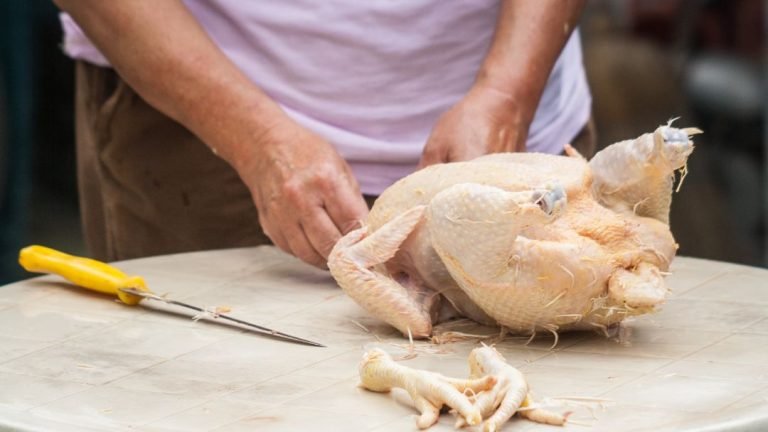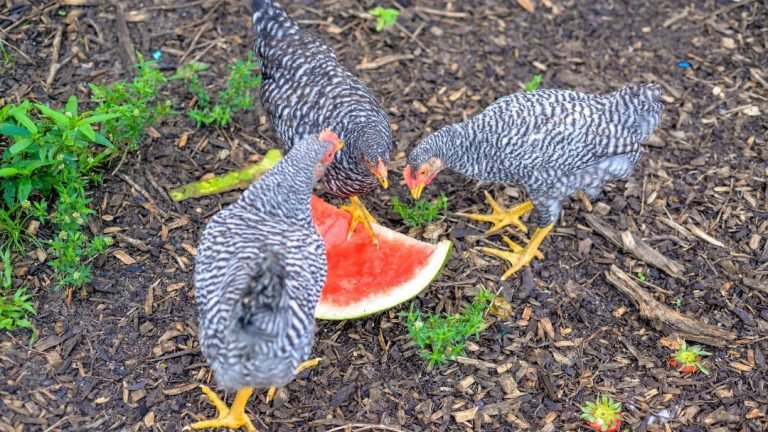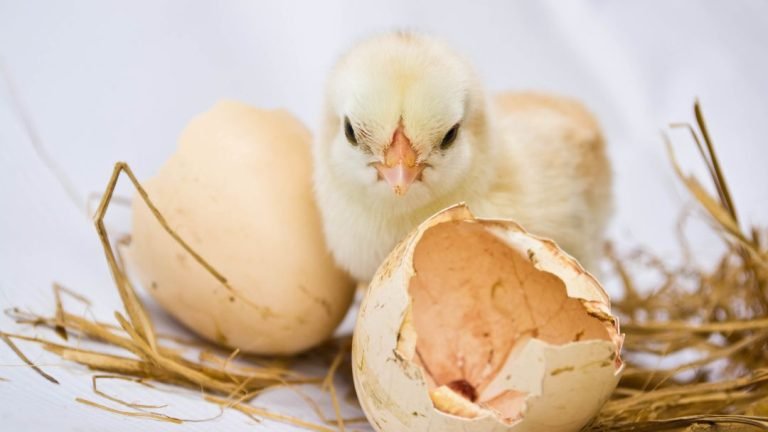To keep chickens warm in winter, provide insulation in their coop and use heat lamps or heated pads if needed. Introducing measures to keep chickens warm during the winter months is crucial for their well-being.
Low temperatures can have negative impacts on their health, productivity, and egg-laying abilities. However, implementing a few simple steps can help to ensure their comfort during the chilly season. Insulating the chicken coop is a key factor in retaining heat and preventing drafts.
This can be achieved by using materials such as straw, hay, or even recycled newspaper. Additionally, heat lamps or heated pads can be introduced if temperatures become extremely cold. By incorporating these measures, chicken owners can maintain a cozy and safe environment for their feathered friends.
Understanding The Winter Needs Of Chickens
Keeping your chickens warm and comfortable during the winter months is crucial to their overall well-being and egg production. Understanding the specific needs of chickens during this time is essential in ensuring they remain healthy and happy.
In this section, we will explore the natural survival instincts of chickens in winter and the appropriate shelter and insulation required to keep them cozy.
Chickens’ Natural Winter Survival Instincts
- Roosting: Chickens have a natural instinct to roost, especially during cold nights. By perching on higher locations such as roosting bars, they can keep their feet off the freezing ground.
- Feathering: Proper feathering is vital for chickens to stay warm. During winter, their feathers become thicker and more insulating, providing them with additional protection against the cold.
- Huddling: Chickens are social animals and will often huddle together to conserve body heat. Encouraging this behavior by creating cozy spaces within their shelter can help them stay warm.
Appropriate Shelter And Insulation For Chickens In Winter
- Well-ventilated coop: While keeping chickens warm is crucial, proper ventilation is equally important. Ensure your coop has adequate ventilation to remove excess moisture, as high humidity can lead to cold-related health issues.
- Draft-free environment: Drafts can cause stress and cold-related ailments. Inspect your coop for any gaps or cracks that may allow cold air to seep in and seal them using appropriate materials.
- Bedding: Provide your chickens with clean and dry bedding materials, such as straw or wood shavings. This not only creates a comfortable surface for them to perch and nest on but also helps insulate them against the cold ground.
- Heat sources: Avoid relying on electric heaters or heat lamps as they can be a fire hazard. Instead, consider safe alternatives such as heated perches or battery-powered coop heaters specifically designed for poultry.
- Coop insulation: Insulating your coop helps retain heat and regulate the temperature inside. Use insulating materials such as foam boards or straw bales to line the walls and wrap them in a weatherproof covering to keep out moisture.
- Natural lighting: Maximizing natural sunlight exposure can help keep your chickens warm during the day. Ensure windows or openings in the coop face southward to allow for adequate sunlight penetration.
By understanding the winter needs of your chickens and providing appropriate shelter and insulation, you can ensure their comfort and well-being throughout the colder months. Implementing these measures will not only keep your chickens warm and healthy but will also contribute to their continued egg production.

Creating A Cozy Chicken Coop
Create a cozy chicken coop and ensure your chickens stay warm in winter with these helpful tips. Provide insulation, ventilation, and supplemental heat to keep your feathered friends comfortable during the colder months.
Designing The Coop For Optimal Warmth
Designing the chicken coop in a way that promotes warmth is essential for keeping your chickens cozy during the winter season. Here are a few key aspects to consider:
- Coop size: Ensure that the coop is large enough to accommodate the chickens comfortably, but not excessively spacious. This helps in retaining heat within the coop.
- Coop orientation: Position the coop in a way that it receives maximum sunlight during the day. This helps in keeping the coop warm naturally and reduces the need for additional heat sources.
- Solid construction: Use sturdy materials to build the coop, such as wood or metal, to provide insulation against the cold. Avoid any gaps or cracks in the walls and floor, as they can let in drafts.
- Elevated flooring: Raise the coop off the ground slightly to prevent cold from seeping up from the earth. This also helps in keeping the coop dry by reducing contact with moist ground.
Insulating The Coop Effectively
Proper insulation is vital for maintaining a warm environment inside the chicken coop. Consider the following insulation techniques:
- Insulated walls: Line the walls of the coop with insulation material, such as foam boards or fiberglass, to prevent heat loss. Ensure that the insulation extends from the floor to the ceiling for maximum effectiveness.
- Roof insulation: Insulate the roof with materials like polystyrene, which helps in retaining heat. A well-insulated roof prevents warm air from escaping through the top of the coop.
- Windows and doors: Insulate windows and doors by using weatherstripping or draft excluders to seal any gaps. This helps in minimizing drafts and cold air infiltration.
- Bedding material: Provide ample bedding material on the coop floor, such as straw or wood shavings, to add an extra layer of insulation. This helps in trapping heat and providing comfort to the chickens.
Proper Ventilation To Prevent Moisture Build-Up
While insulation is important for warmth, proper ventilation is equally crucial to prevent moisture build-up inside the coop. Here’s how to achieve effective ventilation:
- Air circulation: Ensure good air circulation within the coop by incorporating vents or windows that can be adjusted to regulate airflow. This helps in removing stale air and minimizing moisture levels.
- Avoid drafts: While ventilation is necessary, it’s important to avoid direct drafts on the chickens. Position vents at a height that won’t create drafts, and use covers or baffles to redirect airflow.
- Ventilation placement: Place vents near the ceiling or eaves of the coop to allow warm, moist air to escape. This helps in preventing condensation and the subsequent development of mold or respiratory issues.
By paying attention to these aspects and designing a cozy chicken coop, you can ensure that your chickens stay warm, safe, and healthy throughout the winter season.
Providing Adequate Bedding For Chickens
Keep your chickens warm in winter by providing adequate bedding. Use materials like straw or wood shavings to create a cozy environment for your birds.
The Importance Of Bedding In Winter
Providing adequate bedding for your chickens is crucial during the winter months to keep them warm and comfortable. Here’s why it’s important:
- Insulation: Bedding acts as insulation, helping to trap heat and keep the coop warm. It creates a layer between the cold ground and your chickens, preventing the loss of body heat.
- Moisture absorption: Bedding absorbs moisture, such as condensation or droppings, preventing dampness that can lead to frostbite or respiratory issues.
- Comfort: Chickens love to nestle down in soft bedding, which provides them with added comfort during the colder months.
Choosing The Right Bedding Materials
Selecting suitable bedding materials is essential to ensure your chickens’ well-being in winter. Consider the following options:
- Straw: A popular choice, straw is affordable, easy to source, and provides good insulation. However, it needs regular replacement as it tends to become damp quickly.
- Shavings: Wood shavings, like pine or cedar, are effective at reducing moisture and keeping the coop warm. They offer good insulation and are relatively low maintenance.
- Hay: While hay can be used, it tends to retain moisture more than straw or shavings. However, it is still a viable option if changed regularly.
- Sand: Sand is excellent for moisture control and offers good insulation. However, it may not be as comfortable for chickens to walk and roost on compared to other materials.
- Avoid using materials like sawdust, as it can compact easily and become damp, leading to respiratory issues for your chickens.
Maintaining Cleanliness And Dryness In The Coop
Ensuring a clean and dry environment in the coop is crucial for your chickens’ health and warmth. Follow these tips to maintain cleanliness and dryness:
- Regular cleaning: Clean the coop regularly to remove any wet or soiled bedding. This will help prevent the buildup of ammonia and bacteria.
- Adequate ventilation: Proper ventilation is essential to reduce moisture buildup and prevent condensation. Ensure there is enough airflow without creating drafts.
- Deep litter method: Consider using the deep litter method, where fresh bedding is added on top of the existing bedding regularly. This helps generate heat as the bedding decomposes.
- Water management: Monitor water sources in the coop to prevent spills or leaks from wetting the bedding. Keep waterers clean and dry.
- Adjust bedding thickness: Increase the depth of bedding during colder periods to provide additional insulation and warmth.
Remember, by providing adequate bedding, choosing suitable materials, and maintaining cleanliness and dryness in the coop, you can help keep your chickens warm and comfortable throughout the winter months.
Supplementing Heat In The Chicken Coop
Keep your chickens cozy in the winter by supplementing heat in the chicken coop. Ensure their comfort with these easy tips and tricks.
Using Heat Lamps Safely
- Place heat lamps securely to prevent them from falling or tipping over.
- Use heat lamps with built-in safety features like automatic shut-off switches.
- Provide a heat lamp guard to keep chickens from getting too close to the heat source.
- Ensure that cords are safely tucked away to prevent chickens from pecking at them.
- Regularly check heat lamps for any signs of wear or damage.
- Monitor the temperature regularly to ensure it doesn’t get too hot with the heat lamps.
Alternate Heating Methods
- Consider using a heated chicken waterer to help raise the temperature in the coop.
- Utilize heated perches or heated pads for chickens to roost on.
- Insulate the coop with straw or cardboard for added warmth.
- Use deep litter bedding and regularly add fresh bedding to keep chickens cozy.
- Install a radiant heat panel specifically designed for poultry.
Temperature Monitoring And Adjustments
- Invest in a reliable thermometer to monitor the temperature inside the coop.
- Keep the temperature between 32-40°F (0-4°C) as extreme heat can be harmful to chickens in winter.
- Adjust ventilation as necessary to prevent condensation and maintain good air quality.
- Ensure that the temperature inside the coop remains consistent throughout the day and night.
- Consider adding additional heat sources if needed based on the temperature readings.
Remember, providing supplemental heat in chicken coops during winter is crucial to ensure the well-being and comfort of your feathered friends. By following these tips and monitoring the temperature, you can help keep your chickens warm and healthy throughout the colder months.
Stay informed, take necessary precautions, and adjust heating methods as needed to create a cozy space for your flock.
Ensuring Proper Feeding For Winter
Keeping chickens warm in winter is crucial for their well-being. Ensure proper feeding by providing nutritious food that helps them generate body heat, such as high-quality grains and proteins. Additionally, consider offering warm treats like cooked vegetables and hot water to keep them cozy during the colder months.
Adjusting The Diet To Meet Winter Needs
- Increase the amount of carbohydrates in their diet. Carbohydrates provide energy and help keep chickens warm during the winter months. Consider adding more grains such as corn, barley, and wheat to their feed.
- Provide a high-quality protein source. Chickens need protein to keep their bodies functioning properly in cold weather. Include sources like fish meal, soybean meal, and dried mealworms in their diet.
- Increase the fat content in their feed. Fat provides extra calories and helps insulation. Add a little vegetable oil or an oil-rich supplement to their diet.
- Offer calcium-rich foods. Chickens need calcium to maintain strong eggshells, and it becomes even more crucial during winter. Include crushed oyster shells or ground eggshells in their feed.
- Do not forget the vitamins and minerals. Ensure that their diet is well-balanced and contains the necessary vitamins and minerals by providing a poultry-specific multivitamin supplement.
Providing Warm And Nutritious Treats
- Give warm treats to help raise their body temperature. Offering warm oatmeal or scrambled eggs not only provides warmth but also adds nutritional value to their diet.
- Add cooked vegetables to their treats. Vegetables like broccoli, sweet potatoes, and winter squash are packed with nutrients and help to keep chickens healthy and warm.
- Serve warm soups or stews. Chickens enjoy soup just like humans. Use leftover vegetable or meat stock, add some cooked grains or legumes, and make a warm meal for them.
Ensuring Constant Access To Clean Water
- Make sure the water is not frozen. It is crucial to provide fresh, clean water to chickens throughout the day. Inspect their water source regularly and break any ice that forms on it.
- Use heated waterers or ice-free buckets. Consider using a heated base or an insulated waterer to prevent freezing during extremely cold temperatures.
- Provide multiple water stations. Placing waterers in various locations within the coop ensures that chickens have constant access to water even if one gets frozen.
- Monitor water intake. Check regularly to ensure that chickens are drinking an appropriate amount of water. Dehydration can be a concern during winter months.
Remember, by adjusting their diet, providing warm treats, and ensuring access to clean water, you can help keep your chickens warm and healthy throughout the winter season.
Promoting Healthy Chicken Behavior In Winter
During the winter months, it’s crucial to promote healthy behavior in your chickens to ensure their well-being and comfort. By following these strategies, you can keep your feathered flock active, reduce stress and boredom, and maintain a consistent routine.
Encouraging Exercise And Activity
- Provide ample space for chickens to roam: Giving your chickens enough room to move around encourages exercise and prevents them from feeling cooped up.
- Create interesting environments: Introduce objects like perches, ramps, and platforms to encourage exploration and movement throughout their coop.
- Scatter food and treats: By spreading feed and treats around the enclosure, you stimulate natural foraging behavior and keep them active while searching for sustenance.
- Incorporate toys: Engage your chickens with hanging toys, balls, or even a cabbage tethered to a string. These distractions can promote physical activity.
Minimizing Stress And Boredom
- Maintain a clean and odor-free coop: Regularly clean the coop to reduce ammonia levels and prevent the buildup of contaminants that can cause stress.
- Offer a variety of substrates: Provide a mix of bedding materials such as straw, wood shavings, and leaves for chickens to forage through, promoting natural behaviors.
- Add visual stimulation: Hang shiny objects or mirrors in the coop to give your chickens something to peck at and investigate, reducing boredom.
- Avoid overcrowding: Ensure there is enough space for each chicken to establish its territory and avoid excessive pecking or other detrimental behaviors.
Sticking To A Consistent Routine
- Establish a reliable feeding schedule: Feed your chickens at the same time each day, as routine plays a significant role in maintaining their health and well-being.
- Keep lighting consistent: Install artificial lighting to ensure a consistent day and night cycle, as a lack of light can disrupt their natural rhythms.
- Maintain regular social interactions: Spend time with your chickens, offering gentle handling and attention, which helps keep them calm and content.
- Provide consistent access to fresh water: Ensure clean water is available at all times, refreshing it regularly to keep chickens well hydrated.
Remember, promoting healthy chicken behavior during winter involves encouraging exercise and activity, minimizing stress and boredom, and sticking to a consistent routine. By implementing these strategies, you can create a comfortable environment for your feathered friends.
Preventing Frostbite And Cold-Related Health Issues
Keeping chickens warm during the winter is essential to prevent frostbite and other cold-related health issues. Ensure their coop is well-insulated, provide a heat source, use straw bedding for insulation, and offer warm water to keep your flock comfortable and healthy.
Signs And Symptoms Of Frostbite
- Pale or bluish comb and wattles: Frostbite can cause a discoloration in the chicken’s comb and wattles, turning them pale or bluish.
- Blackened or darkened tissues: Severe frostbite can lead to the blackening or darkening of the affected areas due to tissue damage.
- Swelling and blistering: In some cases, frostbitten tissues may present with swelling and blistering.
- Peeling or scaly skin: As the frostbitten area starts to heal, the skin may peel or become scaly.
Treating And Preventing Frostbite In Chickens
To provide relief and minimize the risk of frostbite in chickens, follow these steps:
- Insulate the coop: Ensure the coop is properly insulated to maintain warmth and prevent cold drafts.
- Use bedding materials: Provide ample bedding materials, such as straw or hay, to help retain heat.
- Apply petroleum jelly: Apply a thin layer of petroleum jelly on the chicken’s comb, wattles, and feet to create a protective barrier against frostbite.
- Provide heat sources: Install heat lamps or heated waterers in the coop to generate warmth during extremely cold temperatures.
- Monitor moisture levels: Control moisture levels in the coop as excessive humidity can increase the likelihood of frostbite.
- Check for adequate ventilation: While insulation is crucial, proper ventilation is equally important to prevent humidity buildup.
- Offer warm water and food: Provide warm water and nutritious food that boosts the chicken’s immune system and helps with overall health.
Common Winter Health Issues And Their Prevention
During winter, chickens may experience specific health issues. Take these preventative measures to keep your flock healthy:
- Respiratory infections: Ensure proper ventilation in the coop to reduce the risk of respiratory infections caused by stagnant air.
- Dehydration: Prevent dehydration by offering warmed water throughout the day, as chickens tend to drink less when water is cold.
- Frostbitten toes: Insulate perches and keep them clean, preventing frostbite on the chicken’s feet and toes.
- Egg-binding: Provide a calcium-rich diet to minimize the occurrence of egg-binding, a condition where eggs get stuck in the hen’s reproductive tract.
- Decreased egg production: Supplement the flock’s diet with additional protein to maintain egg production during winter months.
- Feather mites and lice: Regularly inspect and treat your chickens for feather mites and lice, as these parasites thrive in winter-coop conditions.
By implementing these preventive measures and monitoring your chickens closely, you can ensure their well-being throughout the winter season. Keep them warm, comfortable, and healthy, and they will continue to thrive even during the coldest months.
Winterizing The Chicken Coop And Outdoor Area
During the winter months, it’s important to take steps to keep your chickens warm and protected from the cold weather. Winterizing the chicken coop and outdoor area will create a cozy and safe environment for your feathered friends. Here are some essential tips to help you get started:
Protecting The Coop From Drafts And Leaks
- Inspect the coop thoroughly and seal any gaps or cracks where drafts could enter. Use caulk or weatherstripping to seal windows, doors, and other openings.
- Install insulation panels on the walls and ceilings to help retain heat. This will prevent cold air from seeping in and keep the coop warm.
- Use straw or hay to line the floor of the coop. It provides an extra layer of insulation and helps to keep the chickens’ feet warm.
- Check the roof for any leaks and repair them promptly. A leaky roof can lead to moisture buildup and dampness, which can be detrimental to your chickens’ health.
Securely Closing Windows And Doors
- Ensure all windows and doors are securely closed at night to prevent drafts. Cold air entering the coop can cause stress and make it challenging for chickens to maintain their body temperature.
- Consider using draft stoppers or weather seals around windows and doors to create a tight and insulated seal. This will help keep the cold air out and prevent heat loss inside the coop.
Clearing Snow And Ice Around The Coop
- Regularly clear snow and ice around the chicken coop and outdoor area. Accumulated snow can block entrances and create a barrier for the chickens.
- Use a shovel or snow blower to remove snow from paths leading to the coop. This will make it easier for you and your chickens to access the coop during winter.
- Avoid using salt or other de-icing chemicals near the coop as they can be harmful to chickens. Instead, opt for safer alternatives like sand or pet-friendly ice melt.
By following these winterizing tips, you can ensure your chickens stay warm and comfortable throughout the winter season. A well-insulated and draft-free coop is essential for their health and well-being. Keep your chickens happy and protected from the cold weather with these simple measures.
Troubleshooting Common Winter Challenges
Learn effective strategies to keep your chickens warm during the winter months. Discover practical tips and solutions to troubleshoot common challenges and ensure the well-being of your feathered friends in colder weather.
Addressing Freezing Water Sources
- Insulate the water containers: Wrap the water containers with insulating material, such as foam or old blankets, to prevent them from freezing.
- Use heated waterers: Invest in heated poultry waterers, which are designed to keep the water from freezing during cold temperatures.
- Replace water frequently: Check the water sources regularly and replace them with warm water if they have frozen.
- Add a water heater: Install a water heater in the chicken coop to ensure a constant supply of warm water for the chickens.
Dealing With Frozen Eggs
- Collect eggs frequently: Make it a habit to collect eggs more frequently during winter to minimize the chances of them freezing.
- Use deep bedding: Provide a deep layer of bedding in the nesting boxes to help insulate the eggs and prevent freezing.
- Store eggs properly: If you find frozen eggs, bring them indoors and allow them to thaw at room temperature. They can still be used for cooking and baking.
- Consider artificial lighting: By adding artificial lighting to the coop, you can encourage chickens to lay eggs during daylight hours when the temperatures are warmer.
Recognizing And Preventing Frostbite In Combs And Wattles
- Insulate the coop: Ensure the chicken coop is well-insulated to maintain a warmer and more comfortable environment for the chickens.
- Apply petroleum jelly: Before the extreme cold sets in, apply petroleum jelly to the combs and wattles of your chickens to create a protective barrier against frostbite.
- Provide ventilation without drafts: Ventilation is crucial to prevent moisture buildup but ensure that it does not create drafts that can contribute to frostbite.
- Avoid moisture buildup: Moisture is a common cause of frostbite. Keep the coop clean and dry, regularly removing damp bedding and droppings.
Remember, by taking proactive measures to address freezing water sources, dealing with frozen eggs, and recognizing and preventing frostbite in combs and wattles, you can help your chickens stay warm and healthy during the winter months.
Planning For The Future: Preparing For Next Winter
As the winter season comes to an end, it’s important to start planning ahead and preparing for the next winter to ensure that your chickens stay warm and comfortable.
By evaluating the performance of your coop, keeping records, and taking necessary precautions, you can make improvements and be better prepared for the next winter season.
Evaluating The Coop’s Performance And Improvements
- Inspect the coop for any areas that may have allowed drafts or cold air to enter, such as cracks, gaps, or poorly insulated sections.
- Consider adding insulation to the coop walls, ceiling, and floor to provide extra warmth during the winter months.
- Upgrade or repair any ventilation systems to ensure proper airflow without creating drafts.
- Check the windows and doors for any gaps or openings that need to be sealed.
- Evaluate the coop’s layout and design to optimize space and minimize cold spots.
- Install a programmable thermostat or a temperature monitoring system to maintain a consistent and comfortable temperature inside the coop.
- Provide additional heating options, such as heat lamps or radiant heaters, in areas where chickens roost or gather during the winter.
Record-Keeping And Documenting Lessons Learned
- Keep a record of the temperature and environmental conditions inside the coop throughout the winter season.
- Note any changes you made to the coop or adjustments you made to the chickens’ care routine.
- Document any issues or challenges you encountered and how you resolved them.
- Take pictures or videos to visually document the condition of the coop and the chickens during the winter.
- Review your records and observations to identify patterns or areas for improvement.
Taking Necessary Precautions For The Next Winter Season
- Stock up on necessary supplies, such as extra bedding, warmers, or insulation materials, well in advance.
- Schedule routine maintenance for the coop, including cleaning, repairs, and any necessary upgrades.
- Plan for any changes in the number of chickens or their age, and ensure that the coop can accommodate their needs.
- Consider implementing a backup heating system or alternative heat source in case of power outages or equipment failures.
- Stay informed about weather forecasts and prepare for extreme cold spells or blizzards by ensuring adequate heating and extra insulation.
- Learn from your previous experiences and continually refine your winter preparation strategies based on your chickens’ behavior and well-being.
By evaluating the coop’s performance and making necessary improvements, keeping detailed records, and taking necessary precautions, you can be better prepared for the next winter season and ensure the well-being of your chickens. With proper planning and care, you can keep your feathered friends warm and comfortable year after year.
Conclusion
Keeping chickens warm in winter is crucial for their health and well-being. By implementing a few simple strategies, you can ensure that your feathered friends stay cozy during the colder months. Firstly, providing proper insulation in the coop keeps the cold air out and the warmth in.
This can be achieved by using straw or hay as bedding and sealing any drafts. Secondly, keeping the coop clean and dry prevents moisture buildup which can lead to frostbite. Thirdly, adding a heat source such as a heat lamp or a heated water dish can provide additional warmth.
However, it’s important to use caution and ensure the safety of your chickens when using heat sources. Finally, providing enough food and water is essential, as chickens require additional energy to maintain their body temperature in winter. By following these tips, you can keep your flock warm throughout the winter season.
Remember, a warm and comfortable environment leads to happy and healthy chickens.







